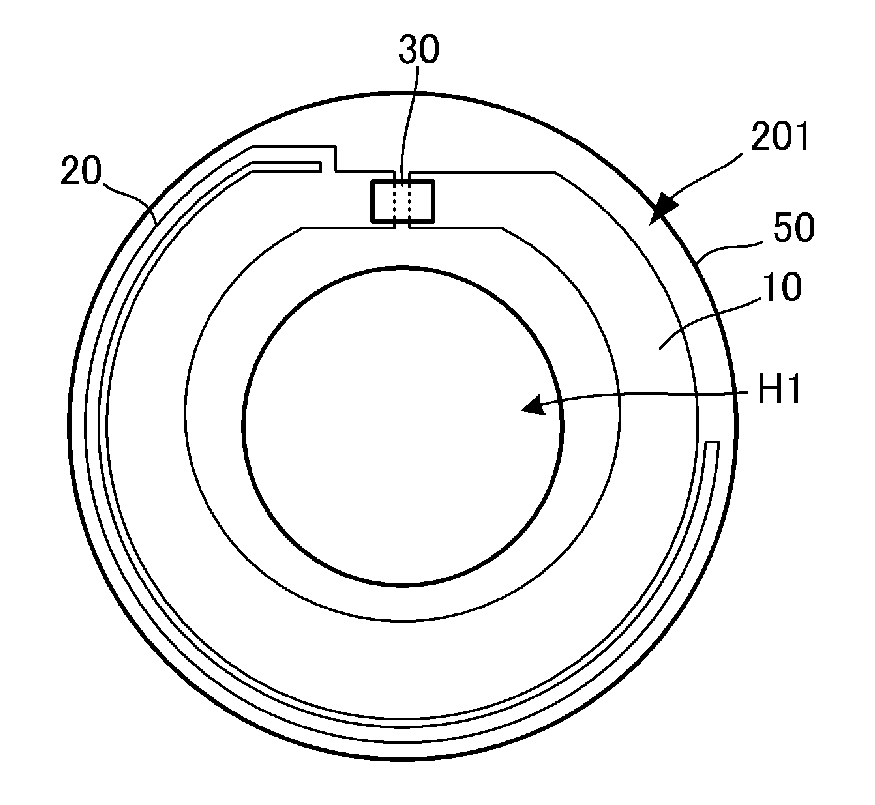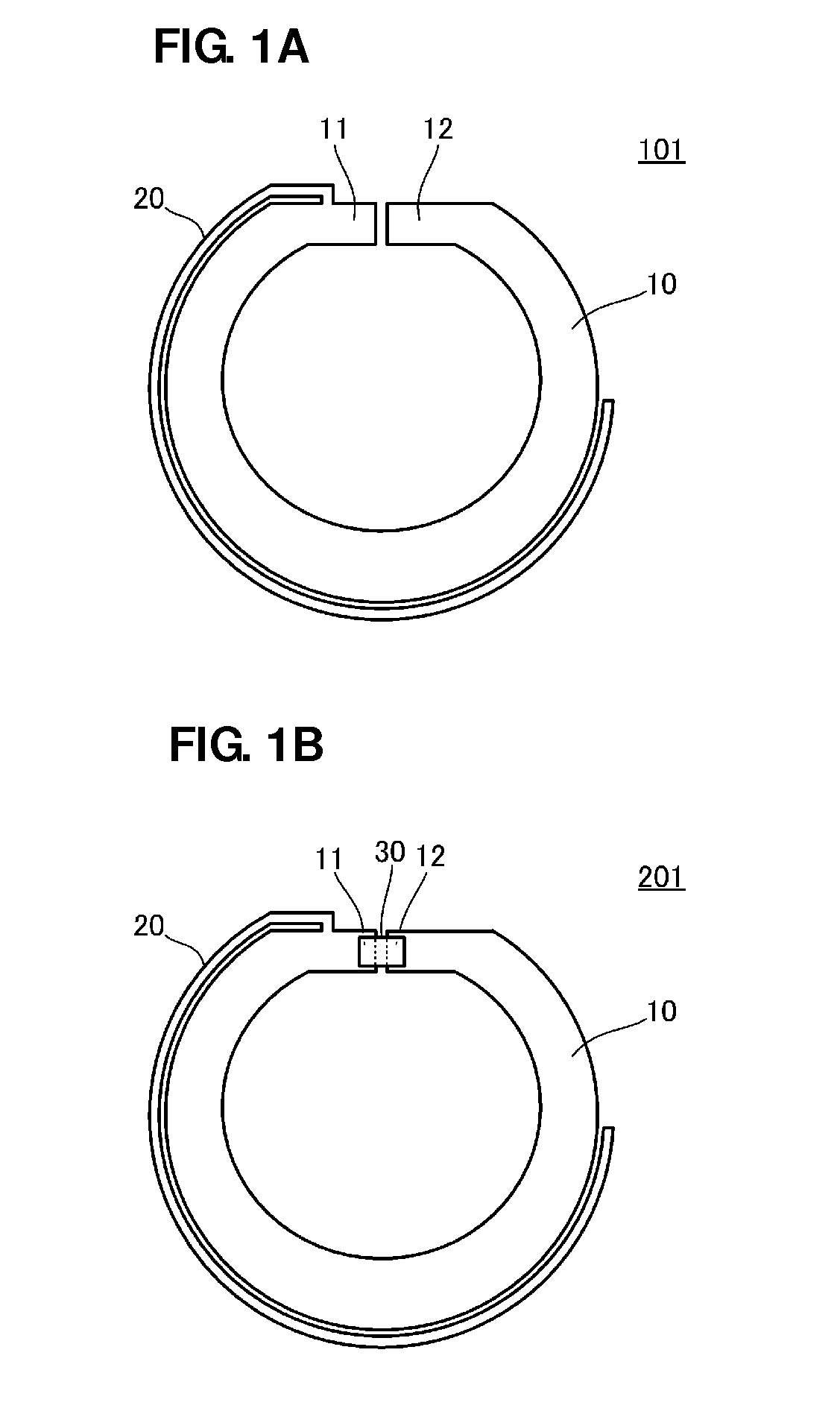Antenna and wireless IC device
- Summary
- Abstract
- Description
- Claims
- Application Information
AI Technical Summary
Benefits of technology
Problems solved by technology
Method used
Image
Examples
first preferred embodiment
[0048]FIG. 1A is a plan view of an antenna 101 according to a first preferred embodiment, and FIG. 1B is a plan view of a wireless IC device 201 including the antenna 101.
[0049]The antenna 101 includes two feeding points 11 and 12, and includes a loop electrode 10 whose starting point and ending point are the feeding points 11 and 12, respectively, and that is arranged in a loop shape, and an auxiliary electrode 20 electrically connected to the loop electrode 10 and located at a position along the outer circumference of the loop electrode 10. The loop electrode 10 defines as a main radiation element.
[0050]The loop electrode 10 and the auxiliary electrode 20 preferably are copper foils patterned on a substrate, for example. The vicinities of both end portions of the loop electrode 10 are regarded as the feeding points 11 and 12. The first end portion of the auxiliary electrode 20 is electrically connected to the vicinity of one feeding point 11 of the loop electrode 10, and the auxil...
second preferred embodiment
[0079]FIG. 6 is the perspective view of a wireless IC 31 according to a second preferred embodiment of the present invention.
[0080]The example illustrated in FIGS. 1A and 1B is illustrated based on the assumption that the wireless IC 30 is a single semiconductor IC chip, for example. In the example in FIG. 6, the wireless IC 31 preferably includes a feed circuit substrate 40 and a wireless IC chip 30T. FIGS. 7-1A through 7-1H are diagrams illustrating the electrode pattern of each layer in the feed circuit substrate 40. FIG. 7-2 is an equivalent circuit diagram based on the feed circuit substrate 40 and a feed circuit.
[0081]The wireless IC chip 30T is mounted on the top surface of the feed circuit substrate 40. In such a state, the terminal electrodes of the wireless IC chip 30T are connected to terminal electrodes 43a, 43b, 44a, and 44b formed on the top surface of the feed circuit substrate 40.
[0082]FIGS. 7-1A through 7-1H are diagrams illustrating the electrode patterns of indivi...
third preferred embodiment
[0098]FIG. 8 is the plan view of an antenna 102 according to a third preferred embodiment of the present invention.
[0099]The antenna 102 illustrated in FIG. 8 includes the two feeding points 11 and 12, and includes the loop electrode 10 arranged in a loop shape and the auxiliary electrode 20 electrically connected to the loop electrode 10 and located at a position along the outer circumference of the loop electrode 10. The auxiliary electrode 20 is arranged along the outer circumference of the loop electrode 10 so as to circle the loop electrode 10 one time or more. In this way, the auxiliary electrode 20 may extend so as to circle the loop electrode 10 one time or more.
[0100]FIG. 9A is a diagram illustrating the distribution of the current intensity of the antenna 102 according to the third preferred embodiment. In this example, the directions of currents in individual portions are indicated by the directions of arrowheads, and current intensities are also indicated by the densitie...
PUM
 Login to View More
Login to View More Abstract
Description
Claims
Application Information
 Login to View More
Login to View More - R&D
- Intellectual Property
- Life Sciences
- Materials
- Tech Scout
- Unparalleled Data Quality
- Higher Quality Content
- 60% Fewer Hallucinations
Browse by: Latest US Patents, China's latest patents, Technical Efficacy Thesaurus, Application Domain, Technology Topic, Popular Technical Reports.
© 2025 PatSnap. All rights reserved.Legal|Privacy policy|Modern Slavery Act Transparency Statement|Sitemap|About US| Contact US: help@patsnap.com



